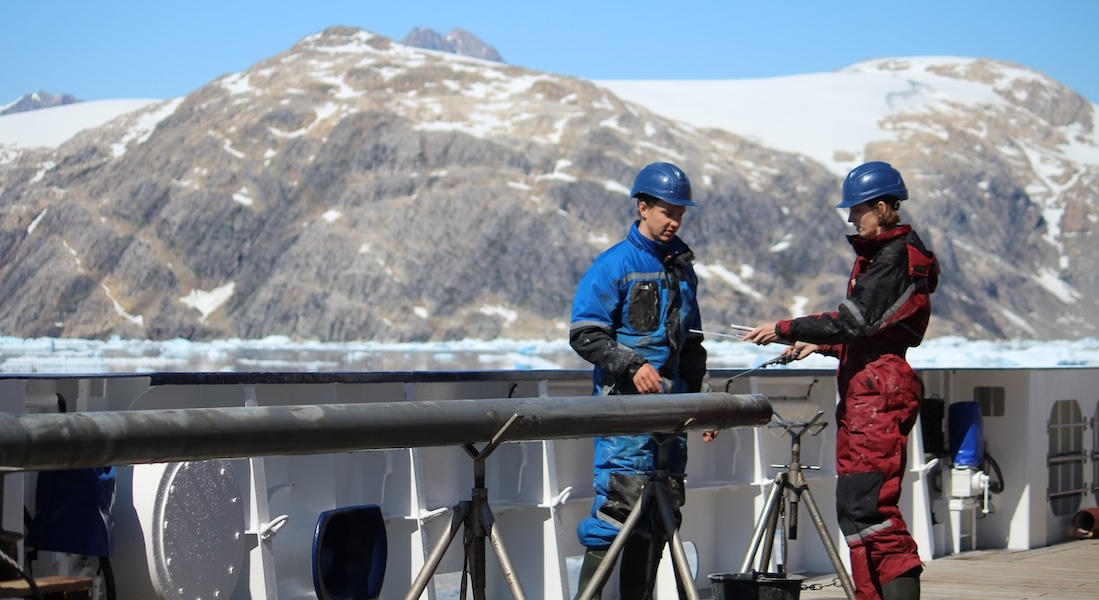DNA from marine sediments reveals millennia of marine mammal occurrences in the Arctic
A groundbreaking study published in Nature Communications has unveiled significant shifts in marine mammal populations around Northern Greenland over the past 12,000 years (also known as the Holocene epoch).

Utilizing DNA from marine sediment cores, the international team—led by researchers at University of Copenhagen and GEUS (Geological Survey of Denmark and Greenland)—reconstructed historical occurrences of marine mammals, offering unprecedented insights into how these species responded to climatic changes throughout the Holocene.
The researchers analyzed four marine sediment cores collected around Northern Greenland, a region of key importance for Arctic marine mammals under ongoing and future global warming. The findings indicate a strong correlation between marine mammal presence and the deglaciation events at the onset of the Holocene.
“The Nares Strait—a narrow waterway that separates northern Greenland from Canada—remained ice-covered until ~9,000 years ago; we detected DNA of narwhals, hooded seals, and ringed seals within 500 years of the strait opening,” said lead author Dr. Lennart Schreiber, from University of Copenhagen’s Globe Institute and GEUS.
In addition, the researchers detected the DNA of several species in the sediments thousands of years earlier than their first appearances in the regional fossil record.
“This means we can now trace much more precisely when marine mammal species accessed newly available habitats along the coasts of Greenland,” added Schreiber.
During the Holocene Thermal Maximum, a period ~10-5.5 thousand years ago characterized by regionally higher air temperatures, the researchers observed northward distribution shifts of temperate and low-Arctic marine mammal species such as minke whales and harp seals.
“These shifts were closely associated with rising air temperatures, changing ocean currents, and declining sea ice, highlighting the sensitivity of marine mammal communities to environmental fluctuations,” said co-senior author Professor Sofia Ribeiro of GEUS.
“Although higher temperatures during the Holocene Thermal Maximum were not caused by increased CO2 levels as is the case for current global warming, the period is often regarded as a near-future climate analogue. Evidence of marine mammal responses from that period can help us understand the resilience of these species to warmer climates.”
This is the first study documenting the presence of individual marine mammal species through time using DNA from marine sediments.
“Our findings provide unique, long-term baseline data on the occurrence of marine mammals around Northern Greenland, enabling insights into past community dynamics and the effects of Holocene climatic shifts on the region’s marine ecosystems,” said Principal Investigator and co-senior author Professor Eline Lorenzen of University of Copenhagen’s Globe Institute.
“As the Arctic continues to experience rapid warming, these historical perspectives are crucial for predicting future ecological responses and informing conservation strategies.”
The study Holocene shifts in marine mammal distributions around Northern Greenland revealed by sedimentary ancient DNA is available at https://doi.org/10.1038/s41467-025-59731-0.
Eline Lorenzen and Sofia Ribeiro have written an article for the weekly newspaper Weekendavisen on the study (in Danish): https://www.weekendavisen.dk/ideer/dna-fra-havets-dyb
This study was funded by Villum Fonden and Danmarks Frie Forskningsfond.
Media contacts:
Dr. Lennart Schreiber, Globe Institute, University of Copenhagen and GEUS.
Phone +4544112952, Email lennart.schreiber@sund.ku.dk
Professor Sofia Ribeiro, GEUS and Globe Institute, University of Copenhagen.
Phone +45 42 24 86 51, Email sri@geus.dk
Professor Eline Lorenzen, Globe Institute, University of Copenhagen.
Phone: +45 26 70 10 24, Email: elinelorenzen@sund.ku.dk
